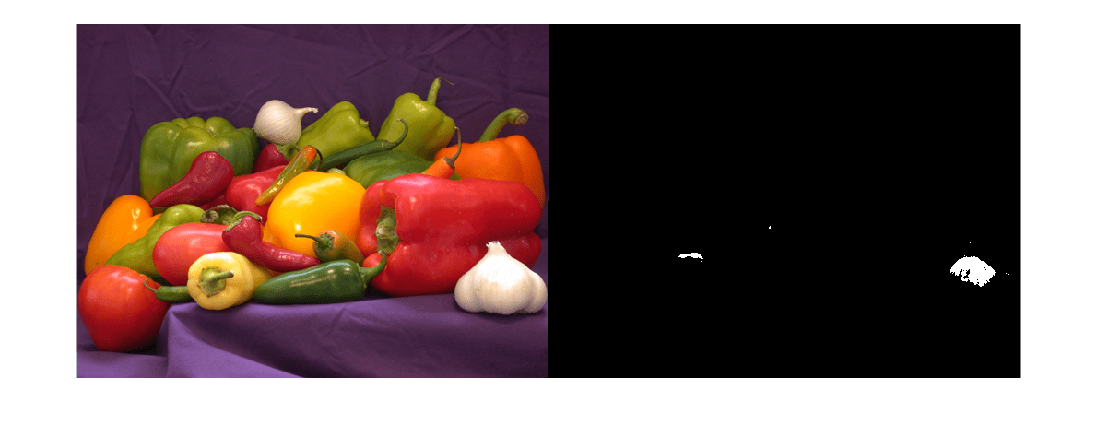read - Read data in datastore - MATLAB (original) (raw)
Syntax
Description
[data](#budsyj6-1-data) = read([ds](#budsyj6-1-ds)) returns data from a datastore. Subsequent calls to the read function continue reading from the endpoint of the previous call.
[[data](#budsyj6-1-data),[info](#budsyj6-1-info)] = read([ds](#budsyj6-1-ds)) also returns information about the extracted data in info, including metadata.
Examples
Read Data in TabularTextDatastore
Create a datastore from the sample file, airlinesmall_subset.csv, which contains tabular data.
ds = tabularTextDatastore("airlinesmall_subset.csv","TreatAsMissing","NA","MissingValue",0);
Modify the SelectedVariableNames property to specify the variables of interest.
ds.SelectedVariableNames = ["DepTime","ArrTime","ActualElapsedTime"];
While there is data available to be read from the datastore, read one block of data at a time and analyze the data. In this example, sum the actual elapsed time.
sumElapsedTime = 0; while hasdata(ds) T = read(ds); sumElapsedTime = sumElapsedTime + sum(T.ActualElapsedTime); end
View the sum of the actual elapsed time.
Read Data in KeyValueDatastore
Create a datastore from the sample file, mapredout.mat, which is the output file of the mapreduce function.
ds = datastore('mapredout.mat');
Read a subset of data in the datastore.
T=1×2 table
Key Value
______ _________
{'AA'} {[14930]}Change the number of key-value pairs to read at a time, by changing the ReadSize property of the datastore.
Read the next five key-value pairs in the datastore.
T=5×2 table
Key Value
______ _________
{'AS'} {[ 2910]}
{'CO'} {[ 8138]}
{'DL'} {[16578]}
{'EA'} {[ 920]}
{'HP'} {[ 3660]}Read Data in CombinedDatastore
Create a datastore that maintains parity between the pair of images of the underlying datastores. For instance, create two separate image datastores, and then create a combined datastore that reads corresponding images from the two image datastores.
Create an image datastore imds1 representing a collection of three images.
imds1 = imageDatastore({'peppers.png','street1.jpg','street2.jpg'});
Create a second datastore imds2 containing a mask of the bright regions of the three images. To create this datastore, first transform the images of imds1 to grayscale. Then convert each image to a binary mask by performing thresholding. In this example, the thresholding operation maps pixels with a value above the threshold (250) to white and all other pixels to black.
imds2 = transform(imds1,@(x) im2gray(x)>250);
Create a combined datastore from imds1 and imds2.
imdsCombined = combine(imds1,imds2);
Read the first subset of data from the combined datastore. The output is a 1-by-2 cell array. The two columns represent the first subset of data read from the two underlying datastores imds1 and imds2, respectively.
dataOut = read(imdsCombined)
dataOut=1×2 cell array {384x512x3 uint8} {384x512 logical}
Display the read data from the combined datastore as a pair of tiled images.
tile = imtile(dataOut); imshow(tile)

Read from the combined datastore again. This call to the read function continues reading from the endpoint of the previous call.
dataOut = read(imdsCombined)
dataOut=1×2 cell array {480x640x3 uint8} {480x640 logical}
Display the read data.
tile = imtile(dataOut); imshow(tile)

Output Arguments
data — Output data
table | timetable | array
Output data, returned as a table, timetable, or array depending on the type of the input ds. The data output can be empty if the amount of data read in a particular call to theread function in combination with the import configuration returns no values.
| Type of Datastore | Data type of data | Description |
|---|---|---|
| TabularTextDatastore,SpreadsheetDatastore, andParquetDatastore | Table or timetable | The SelectedVariableNames property determines the table variables. TheOutputType property determines if the output is a table or timetable. |
| ImageDatastore | Integer array | The dimensions of the integer array depend on the type of image: For grayscale images,data is m-by-n.For truecolor images,data is m-by-n-by-3.For CMYK Tiff images,data is m-by-n-by-4. If the ReadSize property is greater than 1, then data is a cell array of image data corresponding to each image. The read function supports all image types supported by the imread function. For more information on the supported image types, see imread. |
| KeyValueDatastore | Table | The table variable names are Key andValue. |
| FileDatastore | Varies | The output is the same as the output returned by the custom read function, specified by the'ReadFcn' value. |
| TransformedDatastore | Varies | The output is the same as the output of the transformation function @fcn specified in the transform method used to create theTransformedDatastore. |
| CombinedDatastore | Varies | Contains the horizontal concatenation of the output of read from the corresponding underlying datastores. |
| SequentialDatastore | Varies | Contains the output of sequential read from the current underlying datastore. |
info — Information about read data
structure array | cell array
Information about read data, returned as a structure array or a cell array of structure arrays.
- For MATLAB datastores and
TransformedDatastore,infois a structure array that has fields with information about the datastore. - For
CombinedDatastore,infois a cell array of structure arrays. Each element of the cell array contains a structure with the relevant fields of the corresponding underlying datastore. - For
SequentialDatastore, the data type and format ofinfoare the same as the current underlying datastore.
Information in the structure array depends on the type of the input datastore. The structure array can contain the following fields.
| Field Name | Datastore Types | Description |
|---|---|---|
| Filename | ImageDatastore,SpreadsheetDatastore,TabularTextDatastore,FileDatastore,KeyValueDatastore, andTallDatastore | Filename is a fully resolved path containing the path string, name of the file, and file extension. For ImageDatastore objects whose ReadSize property is greater than 1, Filename is a cell array of file names corresponding to each image. |
| FileSize | Total file size, in bytes.ForImageDatastore objects whoseReadSize property is greater than 1, FileSize is a vector of file sizes corresponding to each image.For MAT-files, the value ofFileSize depends on the type of the datastore. KeyValueDatastore andTallDatastore — TheFileSize field contains the total number of key-value pairs in the file.FileDatastore — TheFileSize field contains the total file size in bytes. | |
| FileType | KeyValueDatastore only | The type of file from which data is read, either 'mat' for MAT-files or'seq' for sequence files. |
| Label | ImageDatastore only | Image label name. If theReadSize property is greater than 1, then Label is a vector of label names corresponding to each image. If theLabels property is empty, thenLabel is an empty cell array. |
| NumCharactersRead | TabularTextDatastore only | Number of characters read. |
| NumDataRows | SpreadsheetDatastore only | Vector containing number of rows read from each sheet. |
| Offset | KeyValueDatastore andTabularTextDatastore only | Starting position of the read operation, in bytes. For MAT-files, Offset is the index of the first key and value read. |
| SheetNames | SpreadsheetDatastore only | Names of sheets read. |
| SheetNumbers | SpreadsheetDatastore only | Numbering associated with sheets read. |
Extended Capabilities
Thread-Based Environment
Run code in the background using MATLAB® backgroundPool or accelerate code with Parallel Computing Toolbox™ ThreadPool.
Usage notes and limitations:
- In a thread-based environment, you can use
readonly with the following datastores:ImageDatastoreobjectsCombinedDatastore,SequentialDatastore, orTransformedDatastoreobjects you create fromImageDatastoreobjects by usingcombineortransform
You can usereadwith other datastores if you have Parallel Computing Toolbox™. To do so, run the function using a process-backed parallel pool instead of usingbackgroundPoolorThreadPool(use eitherProcessPoolorClusterPool).
readdoes not support the following image formats in a thread-based environment:- Hierarchical Data Format (HDF)
- SVS
- TIFF
For more information, see Run MATLAB Functions in Thread-Based Environment.
Version History
Introduced in R2014b